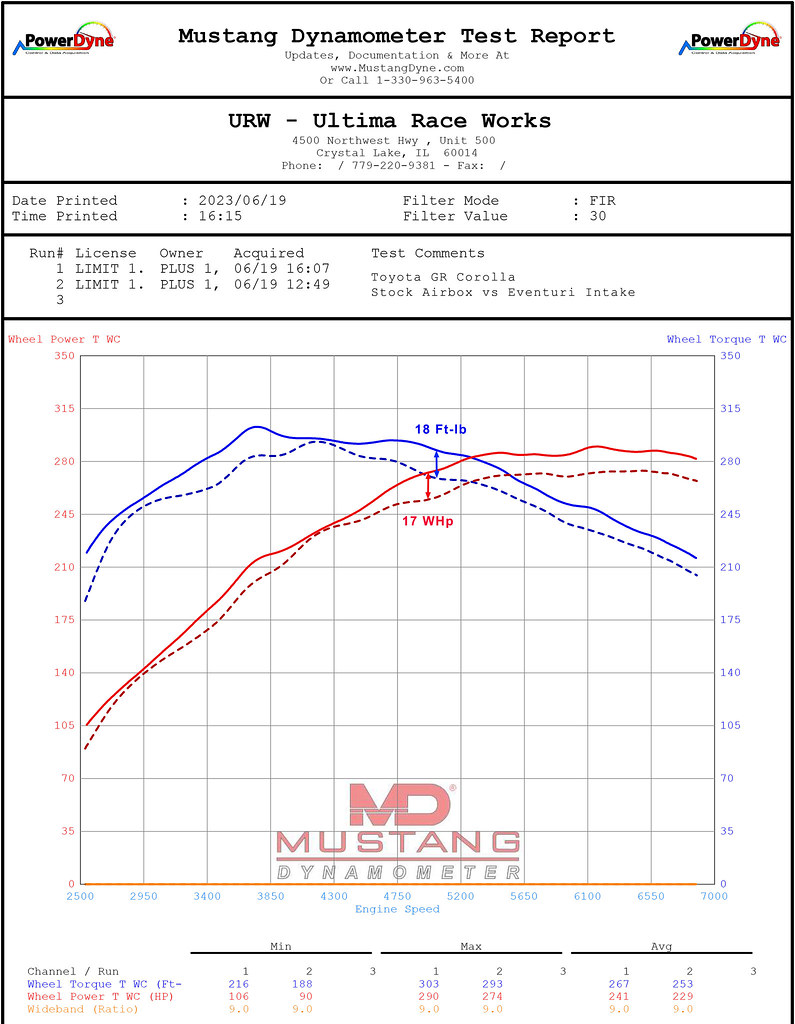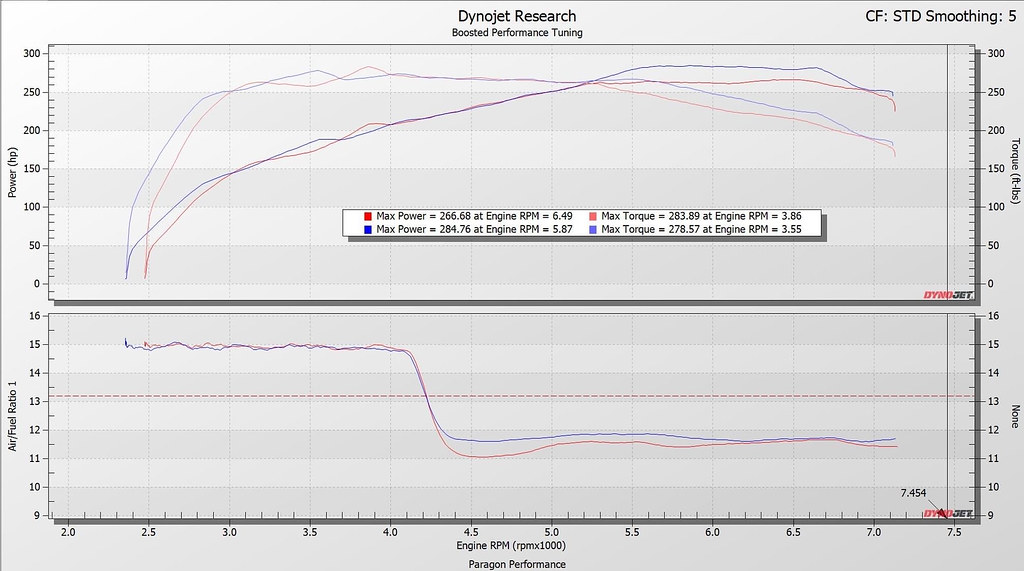Shown in both Gloss and Matte finishes.
\n*Images show our optional carbon engine cover.
The GR Corolla Intake follows on from our GR Yaris system which was developed through extensive data logging of temperatures, flow rates and dyno testing. Since this is a turbocharged engine, heat and volume were the main considerations during development. This intake system has been developed to offer the highest possible flow rate whilst maintaining the lowest intake temperatures possible. Each component has been designed to provide the turbo with a smooth and free flowing path. By ensuring a sealed system we have improved on the IAT's of the OEM airbox whilst at the same time increasing the internal volume to reduce the pressure drop and therefore reduce pumping losses of the turbo. In doing so the turbo is able to operate more efficiently and therefore reaches peak boost sooner to produce a net performance gain.
The filter itself has an outer diameter of 210mm or 8.3" with a filtration surface area of over 130,000mm^2. The patented Venturi housing has been designed to provide the maximum internal volume possible for the GR Corolla and provides laminar flow to the turbo tube.
The Eventuri Difference
The GR Corolla Eventuri system uses our Patented Carbon fiber Housing which provides an aerodynamically efficient airflow path from the filter to the turbo. Not just another cone filter with a heat shield but a unique design which invokes the Venturi affect and maintains laminar flow conditions to reduce the drag on the turbo.
Performance:
Dyno TestingOur GR Corolla intake has been independently tested by various reputable tuners. The first dyno chart is from Limit1 in the US. Several runs were done with the OEM airbox to get a repeatable result and then again with the Eventuri intake. Tests were done on the same day back to back. Results show an increase in torque and power across the entire RPM range - not just at the peak RPM, which is why the car feels more responsive and is able to accelerate faster through the gears.
Dyno Results Summary:
The second set of results are from Paragon Performance also in the US who tested the intake against the stock airbox on the same day using 91 octane fuel. The systems were tested several times on a dyno jet in both configurations to get a repeatable result. In this instance the addition of the intake hits the load limit and the ECU closes the throttle to bring the load back down after 6600 rpm. This only happened on the dyno and not on the road. All dyno runs were done with stock ECU software.
 Intake Air Temperature
Intake Air TemperatureSince our intake system does not take air from the engine bay area unlike the stock airbox, the intake air temperatures are also lower which in part explains some of the performance gains shown above. The logs below show the temperatures at the intake and also at the after the intercooler. As can be seen, there is a measurable difference in temperatures at both locations. This again goes to show that the intercooler will only cool down the air by a proportional amount and the temperature of the air going into the intercooler will affect the temperature coming out of the intercooler.

Product details: